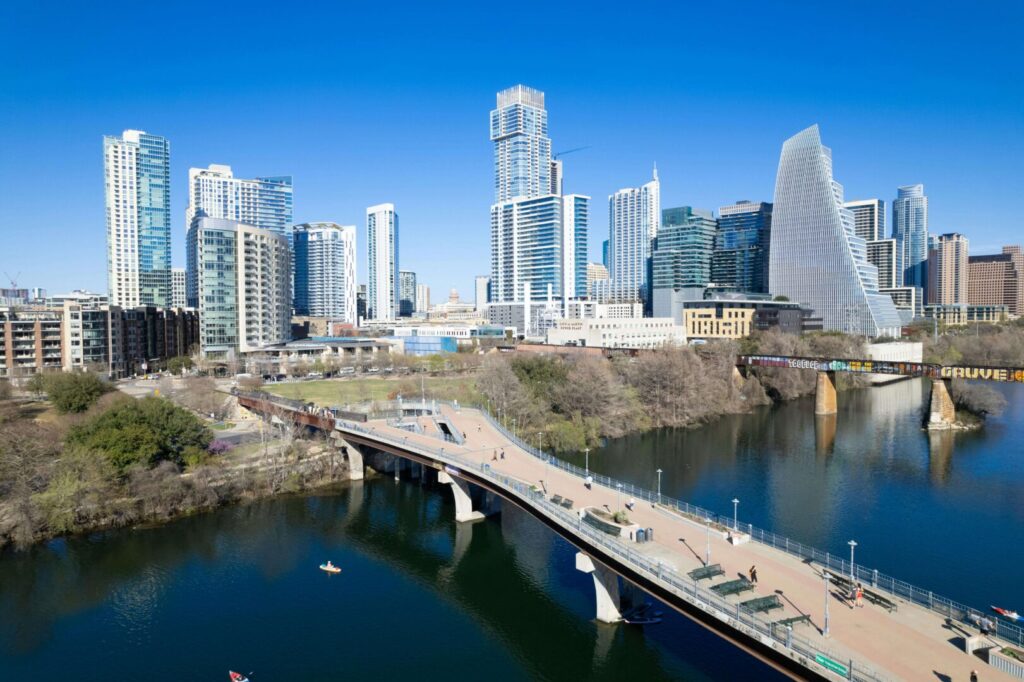Texas Real Estate Is Shifting In 2025
If you’ve been watching the Texas real estate market for the past few years, you know it’s been a wild ride. Home values exploded in Austin, Dallas, and Houston. Investors from California flooded in with cash. And everyone seemed to have the same idea: “Move to Texas!”
But here in 2025, the game is changing. While the big metros still draw attention, a growing number of buyers and investors are quietly redirecting their focus to Texas’s secondary cities—places like Waco, Lubbock, Temple, Tyler, Killeen, and College Station. They may not have the skyscrapers, but they’re gaining serious momentum in terms of affordability, rental returns, and long-term growth potential.
So what’s driving this shift—and why should you or any other Texas real estate professionals care?
1. Big City Burnout Is Real

Let’s start with the obvious: Texas’s major metros are expensive.
In Austin, the median home price is still hovering near $500,000, and property taxes aren’t getting any cheaper. Even in Houston and Dallas, once known for affordability, prices have soared beyond what many first-time buyers or out-of-state investors can stomach.
Add in traffic congestion, rising insurance premiums, and increased competition from institutional investors, and it’s no surprise people are looking for an alternative.
2. Affordability Meets Opportunity in Smaller Cities

In secondary cities across Texas, homes can still be found under $250,000—and sometimes even under $200,000.
Let’s look at a few examples of CityMedian Home Price (2025) Population Growth (5-Year Trend):
- Waco $242,000 +9.8%
- Lubbock $218,000 +8.5%
- Temple $235,000 +7.9%
- Tyler $257,000 +10.1%
- College Station $264,000 +12.3%
Not only are homes cheaper, but the rent-to-value ratio in these markets is often more favorable for investors, especially with strong demand from students, military families, and healthcare workers in towns like College Station, Killeen (near Fort Hood), and Temple (home to Baylor Scott & White Medical Center).
3. Remote Work Is Leveling the Playing Field

One of the biggest hangovers from the pandemic? Remote work isn’t going anywhere.
Workers who once needed to live in a big city now have the freedom to pick a home based on lifestyle and cost of living—not just proximity to the office.
That’s a big win for Texas’s mid-sized cities, where buyers can find more space, lower taxes, and a slower pace of life—without sacrificing modern conveniences like fiber internet, co-working hubs, and decent airports.
Even digital nomads and young families are skipping the big metros and heading straight to places like San Marcos, Abilene, or New Braunfels, where they can buy more for less and still hit Austin or San Antonio within an hour or two.
4. Rental Demand Is Surprisingly Strong

Don’t be fooled by the small-town vibe—rental demand in secondary Texas cities is hot.
Here’s why:
- Universities like Texas Tech (Lubbock), Baylor (Waco), and Texas A&M (College Station) fuel constant tenant turnover
- Military bases near cities like Killeen create stable rental demand
- Healthcare and logistics jobs in cities like Temple and Tyler are drawing transplants
- Build-to-rent communities are expanding rapidly across Central Texas
Investors are taking notice. Properties with cash flow that would be borderline in Austin or Houston are performing well in markets that fly under the radar.
5. Infrastructure and Development Are Catching Up

Texas isn’t just about oil and cattle anymore. Massive infrastructure projects, like the I-14 “Gulf Coast Strategic Highway” and expanded rail connections, are improving accessibility to secondary markets. Some towns that were once considered “out there” now offer commutable distances to major metros—without the big city headaches.
New hospitals, retail hubs, Amazon distribution centers, and tech manufacturing plants are popping up in smaller cities, too. Temple, for example, is quietly becoming a medical and logistics powerhouse. Lubbock is investing in high-speed internet to attract remote tech talent. Tyler is seeing growth in agribusiness and light manufacturing.
These aren’t sleepy towns anymore—they’re becoming real economic engines.
6. Local Governments Are Pro-Growth

Many secondary cities in Texas actively want growth.
Unlike the bureaucratic gridlock of some large metros, smaller municipalities often have:
- Faster permitting times
- Fewer zoning restrictions
- Tax incentives for builders and businesses
- Affordable land still available for development
This is making them friendly to investors, developers, and buyers looking to build, expand, or relocate without red tape.
7. Where the Smart Money Is Going

Institutional investors and big developers are already starting to scoop up land and properties in cities the average consumer hasn’t even considered yet.
- D.R. Horton is building new construction neighborhoods in Belton and Waxahachie
- Blackstone-backed firms quietly investing in multi-family units near College Station
- Short-term rental investors are shifting focus to areas like Lake Granbury, Canyon Lake, and Fredericksburg
If you wait until it’s all over TikTok, it’s already too late.
Final Thoughts: The Smart Move Is to Think Smaller
In 2025, the real estate playbook in Texas is changing. Big cities will always have their place—but smart buyers and investors are looking beyond the obvious.
Secondary cities offer:
- Better price-to-value ratios
- Strong rental demand
- Lower risk of overpaying
- More room for appreciation
Whether you’re a real estate agent looking for a fresh farming area, an investor in search of cash flow, or a relocating buyer tired of bidding wars—you’d be smart to take a closer look at Texas’s “underrated” cities. Because today’s quiet towns? They might just be tomorrow’s hottest zip codes.
